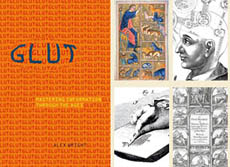The Botany of Desire
September 5, 2003
A fast-dash airport bookstore purchase en route home to Richmond this weekend yielded a copy of Michael Pollan's Botany of Desire.
Pollan, an environmental writer and frequent contributor to the New York Times magazine, has constructed a dark and slightly unsettling drama of our species' relationship with so-called "domesticated" plants.
The book poses a radical conceit: that much as our species likes to think of ourselves as masters of the natural world - as evidenced in our invention of agriculture - it may just be the other way around: perhaps it is the plants who have domesticated us?
Pollan traces the evolution of four plant species: apples, tulips, marijuana and potatoes - showing how these plants have deftly coopted human beings in much the same way that flowers manipulate bees, or oak trees have learned to rely on squirrels' predictable proclivity to forget where they bury every 4th acorn.
By evolving a set of characteristics that appeal particularly to humans - beauty, nourishment, intoxication (especially intoxication) - these plants seem to have triumphed over many of their wild cousins by effectively training humans to propagate their genes. Of course, the bargain works both ways: by adapting to the preferences of human senses and sensibilities, these plants have formed externalized imprints of our own desires. Just as certain flowers have evolved to resemble insect sexual organs, so these plants have developed characteristics that seem to reflect and even cultivate some of our innate human needs.
The most fascinating chapter chronicles Pollan's search for John Chapman, the historical Johnny Appleseed. The beloved barefoot hero of all those early American folk tales turns out not to be not quite the happy-go-lucky pomophile we learned about in grade school. The real Johnny Appleseed was a curious fellow indeed. Barefoot, clad in robes, never having a permanent address during his entire adult life - he was a roving woodland spirit who roamed the early frontier. He may also have married a child bride, and was known to harbor some wild-eyed Swedenborgian religious ideals in many ways closer to a pantheistic naturism than to Protestant Christianity.
The young America's fascination with apples had little to do with sweetness or nutrition (indeed, most apples at the time were hopelessly bitter "spitters"). Frontier Americans used apples, overwhelmingly, to make hard cider or even stronger applejack. Hard cider was far and away the staple beverage of the nineteenth century frontier, arguably more popular than water (it was only during Prohibition that a panicked apple industry hatched the slogan "an apple a day keeps the doctor away," and that anyone began to think of apples primarily as a foodstuff).
Chapman, Pollan argues, was America's Dionysus:
Chapman fits the Dionysian archetype to a tee, a mythic figure treading the borderlines between an emerging civilization and the sweet savageries of nature, and a front-line negotiator in our species' ongoing evolutionary dialogue with plants.
File under: Books
_____________________« Hypertext 03 | Oh, yet we trust that »
GLUT:
Mastering Information Through the Ages
New Paperback Edition
“A penetrating and highly entertaining meditation on the information age and its historical roots.”
—Los Angeles Times
